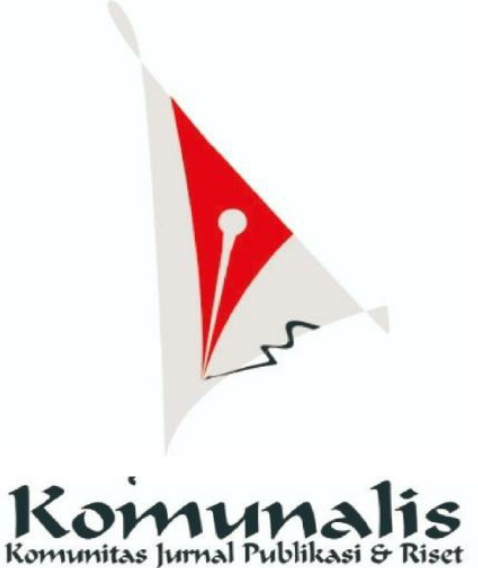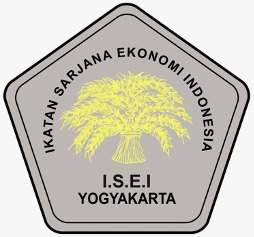Innovation Needs, Social Capital, and Learning Process of Batik Craftsmen
Sugito Sugito, Universitas Negeri Yogyakarta, Indonesia
Abstract
This study aims to determine batik craftsmen‘s innovation needs and learning process in relation to ownership of social capital. This study is stimulated by an assumption explaining that batik craftsmen’s are able to fulfill their innovation needs through learning process by utilizing established social capital in the batik production context. This qualitative research was conducted on three batik craft SMEs in two sub-districts in Bantul Regency, the center of Yogyakarta's batik production. The research subjects were craftsmen, workers, batik organizers, and community leaders. Data collection is conducted through observation and in-depth interviews. Meanwhile the data were analyzed by using qualitative analysis techniques. The research result reveals that the SMEs of batik craftsmen have diverse innovation needs in expanding their business. Moreover, to fulfill their innovation needs, they also conducted both independent and cooperative learning by utilizing the existing social capital. Yet, the learning process has not been optimally conducted. Thus, empowerment efforts are necessary to develop learning skills by utilizing social capital to meet craftsmen’s innovation needs.
Keywords: social capital, learning process, innovation, batik, needs
Kebutuhan Inovasi, Modal Sosial, dan Proses Belajar Perajin BatikAbstrak
Penelitian ini bertujuan untuk mengetahui kebutuhan inovasi dan proses belajar para perajin batik dalam konteks kepemilikan modal sosial. Hal ini didasarkan pada pandangan bahwa kebutuhan inovasi dapat dipenuhi apabila para perajin dapat memanfaatkan modal sosial yang terbangun dalam konteks usaha produksi batik melalui proses belajar yang mungkin terjadi di dalamnya. Penelitian kualitatif ini dilakukan terhadap tiga UKM perajin batik di dua kecamatan di Kabupaten Bantul sebagai sentra produksi batik Yogyakarta. Subjek penelitian adalah para perajin, pekerja, pengurus paguyuban batik, dan tokoh masyarakat. Pengumpulan data dengan observasi dan wawancara mendalam dan data dianalisis menggunakan teknik analisis kualitatif. Hasil penelitian menunjukkan bahwa perajin batik memiliki kebutuhan inovasi yang beragam dalam mengembangkan usahanya dan melakukan proses belajar baik secara mandiri maupun kooperatif dengan memanfaatkan modal sosial sebagai hasil interaksi dengan lingkungannya guna memenuhi kebutuhan inovasinya walaupun belum optimal. Oleh karena itu, diperlukan tindakan-tindakan pemberdayaan untuk meningkatkan kemampuan belajar dengan memanfaatkan modal sosial guna memenuhi kebutuhan inovasi perajin.
Kata kunci: modal sosial, proses belajar, inovasi, batik, kebutuhan
Keywords
Full Text:
PDFReferences
Alguezaui, S., & Filieri, R. (2010). Investigating the role of social capital in innovation: sparse versus dense network. Journal of Knowledge Management, 14(6), 891-909.
Bhatt, P., & Altinay, L. (2013). How social capital is leveraged in social innovations under resource constraints? Management Decision, 51(9), 1772-1792.
Bjerke, L., & Johansson, S. (2015). Patterns of innovation and collaboration in small. Ann Reg Sci, 55(Special), 221–247. doi:10.1007/s00168-015-0712-y
Brata, A. G. (2011). Social Networking and Innovation Handicraft Industry in Bantul Yogyakarta. Economics, Management, and Financial Markets, 6(2), 106–121.
Brata, A. G. (2011). Social Networking and Innovation Handicraft Industry in Bantul Yogyakarta. Economics, Management, and Financial Markets, 6(2), 106–121.
Brata, A. G. (2011). Social Networking and Innovation Handicraft Industry in Bantul Yogyakarta. Economics, Management, and Financial Markets, 6(2), 106–121.
Camps, S., & Marques, P. (2014). Exploring how social capital facilitates innovation: The role of innovation enablers. Technological Forecasting & Social Change, 88(Oktober 2014), 325-348. Retrieved November 12, 2018, from https://www.sciencedirect.com/science/article/pii/S0040162513002667?via%3Dihub
Danneels, E. (2002). The dynamics of product innovation and firm competences. Strategic Management Journal, 23, 1095–1121.
Disperindkopukm. (2017). Laporan Kinerja. Bantul: Dinas Koperasi, UKM dan Perindustrian Kabupaten Bantul.
Drucker, P. F. (1993). Innovation and Entrepreneurship: Practice and Principles. California: Perfect Bound.
Fukuyama, F. (1997). Social Capital. Oxford: Delivered at Brasenose College, Oxford.
Fullan, M. (1982). The Meaning of Educational Change. Columbia: Teachers College Press.
Hamid, E. S., & Susilo, Y. S. (2011). Strategi Pengembangan Usaha Mikro, Kecil dan Menengah. Jurnal Ekonomi Pembangunan, 12(1), 45-55.
Hamid, E. S., & Susilo, Y. S. (2011). Strategi Pengembangan Usaha Mikro, Kecil dan Menengah. Jurnal Ekonomi Pembangunan, 12(1), 45-55.
Hanafi, M. (2013, 2 9). Usaha Mikro, Kecil dan Menengah (UMKM) di Indonesia. Retrieved from peran usaha mikro, kecil dan menengah (UMKM) dalam pembangunan ekonomi indonesia: https://www.scribd.com/doc/102335452/Usaha-Mikro-Kecil-dan-Menengah-UMKM-di-Indonesia
Haryanto, J. O., & Priyanto, H. (2013). Recent future research in consumber behavior: A better understanding of batik as Indonesian heritage. International Refereed Research Journal, VI(4), 32-40.
Lahiri, N., & Narayanan, S. (2013). Vertical integration, innovation, and alliance portfolio size: implications for firm performance. Strategic Management Journal, 34, 1042–1064.
Lave, J., & Wenger, E. (1991). Situated learning: Legitimate peripheral participation. Cambridge: Cambridge University Press.
Lee, S. (2018). Innovation: from small “i” to large “I”. International Journal of Quality Innovation, 4(2), 2-10. doi:https://doi.org/10.1186/s40887-018-0022-4
Li, Z., & Lou, F. (2011). Research on the relationship among social capital, organization learning and knowledge transfer performance. Journal of software, 6, 1763-1770.
Martı´nez-Can˜as, R. (2012). Knowledge acquisition’s mediation of social capital-firm innovation. Journal of Knowledge Management, 61-76.
McMillan, J., & Schumacher, S. (2013). Research in education: Evidence-based Inquiry. London: Pearson Education Limited.
Nahapiet, J., & Ghosal, N. (1998). Social capital, intelectual capital. The Organizational Advantage. Academy of Management Review, 23(2), 243-266.
Nugroho , O., & Andadari, R. K. (2014, May). The Innovation of Micro, Small, and Medium Enterprises: A Case Study of Laweyan Batik Village, Indonesia. Indian Journal of Commerce and Management Study., IV(2), 37-46.
Örtenblad, A. (2018). What does “learning organization” mean? The Learning Organization,, 25(3), .150-158.
Polnaya, G. A., & Darwanto, D. (2015). Pengembangan ekonomi lokal untuk meningkatkan daya saing pada ukm ekonomi kreatif batik bakaran di pati, jawa tengah. Jurnal Bisnis dan Ekonomi (JBE),, 22(1), 1 – 10.
Rinawati, I. D., Sari, P. D., Nugroho, S., Muljadi, F., & Lestari, P. S. (2013, Januari). Pengelolaan produksi menggunakan pendekatan lean and green untuk menuju industri batik yang berkelanjutan (studi kasus di UKM Batik Puspa Kencana). J@TI Undip, VIII(1), 43-50.
Rogers, E. (1983). Diffusion of Innovations. New York: The Free Press.
Shrader, M., & Finkle, T. (2018). Creative achievement & intelligence among student entrepreneurs. Journal of Entrepreneurship Education, 18(2), 1-16.
Siswanto. (2012). Alternatif pemodelan sistem akuntansi penjualan tunai terkomputerisasi bagi usaha kecil dan menengah. Jurnal Economia, 8(2), 196-213.
Tohani, E., Sumarno, S., & Suryono, Y. (2015). Pendayagunaan modal sosial dalam pendidikan kewirausahaan masyarakat: Studi pada program pendidikan desa vokasi. Jurnal Pembangunan Pendidikan: Fondasi dan Aplikasi, 3(2), 151-166.
Trucker, R. (2008). Driving growth through innovation. San Francisco: Berrett–Koehler Publishers, Inc.
Wang, Y.-L., Wang, Y.-D., & Horng, R.-Y. (2010). Learning and innovation in small and medium enterprises. Industrial Management & Data Systems, 110(2), 175-192.
Westlund, H. (2006). Social capital in the knowledge society: Theory and empirics. Heidelberg: Springer.
Wichkramasinghe, V., & Weliwitigoda, P. (2011). Benefits gained from dimensions of social capital: a study of software developers in Sri Lanka. Information Technology & People, 24, 394-413.
Yang, J., Alejandro , T. B., & Boles, J. (2011). The role of social capital and knowledge transfer in selling center performance. Journal of Business & Industrial Marketing, 26(3), 152–161.
Yusr, M. M. (2016). Innovation capability and its role in enhancing the relationship between TQM practices and innovation performance. Journal of Open Innovation: Technology, Market, and Complexity, 2-15. doi:DOI 10.1186/s40852-016-0031-2
DOI: https://doi.org/10.21831/economia.v15i1.22799
Refbacks
- There are currently no refbacks.
Archive, Citation & Indexing:
More archive, citation, & indexing...
This site is licensed under a Creative Commons Attribution 4.0 International License


















